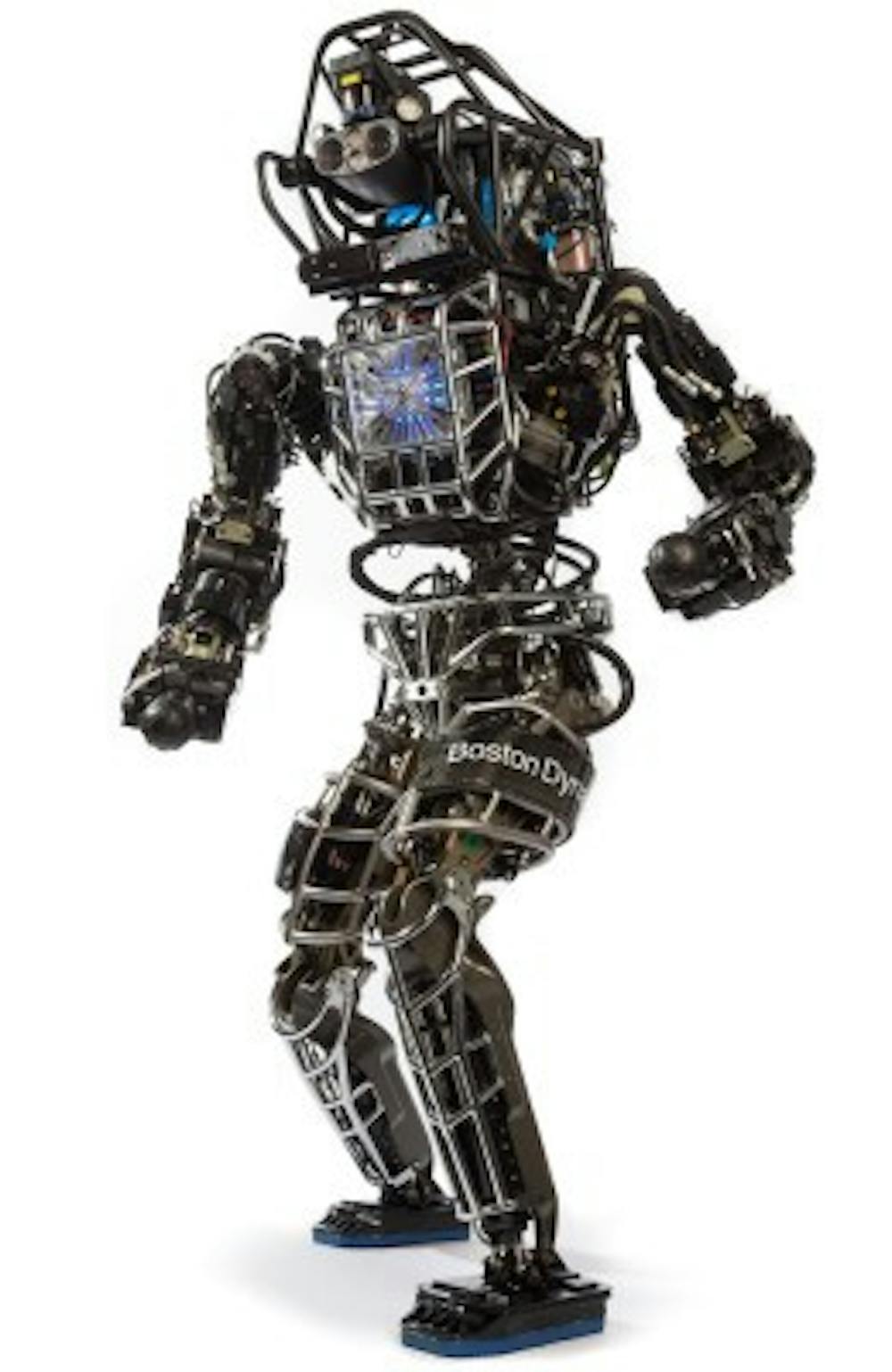By TONY WU
The public fascination with robots is nothing new. With movies such as I, Robot and Pacific Rim people both fear and hope for the day that robots will become a prominent part of everyday life. Atlas, a robot developed by robotics company Boston Dynamics, has become more humanoid than ever: a recent video released shows the robot strolling through the woods.
In many industries robots are already an integral part of the manufacturing plants. From sushi-making robots in Japan to the mars lander Curiosity, automated machines contribute to the rapid growth of modern society. Despite the usefulness of these machines, their box-like appearance can distance them from the public.
To cater to these demands, companies and researchers are attempting to create functioning human-like robots. However, there are several difficult challenges. First, to allow the robots to be bipedal, there are complex factors such as controlling the center of balance.
In humans the walking motion is produced with the double pendulum technique. The first pendulum is produced when one of the legs swings forward, pivoting at the hip. Then the second pendulum occurs and is called an inverted pendulum. This happens when the forward leg touches the ground, heel first and follow the rolling motion until the toes also touch the ground. These motions have to be coordinated to avoid missteps and trips which is difficult for the stiff-gait of most bipedal robots.
Another problem for robots is the change in the center of mass when the robot moves. When a person walks, his center of mass is raised when the leg swinging forward passes the stationary leg. The center of mass then drops to its lowest point when the legs are spread apart. This shift in the center of mass allows the body to convert between kinetic and potential energy. The robots, on the other hand, cannot account for the shifts in their center of mass, creating awkward stumbles and pauses as they walk.
Despite these significant obstacles Boston Dynamics, a subsidiary of Google, managed to create a robot that can handle the dynamics of walking bipedally. The humanoid robot, Atlas, is six feet tall and designed for search and rescue missions. It was developed using funding from the U.S. Defense Advanced Research Projects Agency (DARPA).
Atlas was originally unveiled in June 2013. It possesses a sensor head that incorporates stereo cameras and a range finder which allows it to mimic human vision and find the distances of various objects. Furthermore, Atlas is equipped with legs and arms that possess 28 degrees of freedom in total, granting it more versatility in its movements.
“Atlas is a high mobility, humanoid robot designed to negotiate outdoor, rough terrain,” Boston Dynamics states on its website. “Atlas can walk bipedally leaving the upper limbs free to lift, carry, and manipulate the environment.”
In addition to its journey in the woods, shown in a video uploaded to YouTube on Aug. 15, Boston Dynamics researchers have been testing Atlas’s balance by using a boxing glove to shove the robot and see if it falls.
Atlas was recently featured at the DARPA Robotics Challenge (DRC). A number of teams used Atlas as part of their projects, including the Massachusetts Institute of Technology (MIT) team.
The 2015 DRC asked competitors to use robots in a disaster-response context. Some of the challenges included making robots walk up steps or traverse uneven ground, all while the Internet used to direct the robots kept cutting out in order to simulate a live disaster.
Due to the improvements in software and hardware, Atlas is able to navigate uneven terrain including outdoor trails. According to Marc Raibert, the founder of Boston Dynamics, Atlas’s recent stroll represents another step forward in the quest to make robots capable of walking like humans.
“We’re making pretty good progress on making it so that it has mobility that is sort of within shooting range of yours,” Raibert said at a conference.
He added,“Out in the world is just a totally different challenge than in the lab. You can’t predict what it’s going to be like.”





